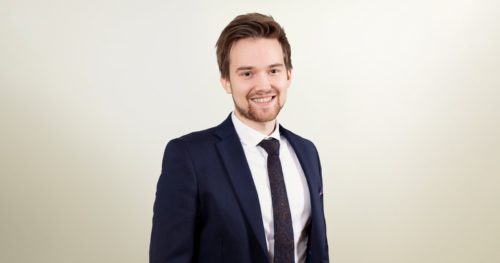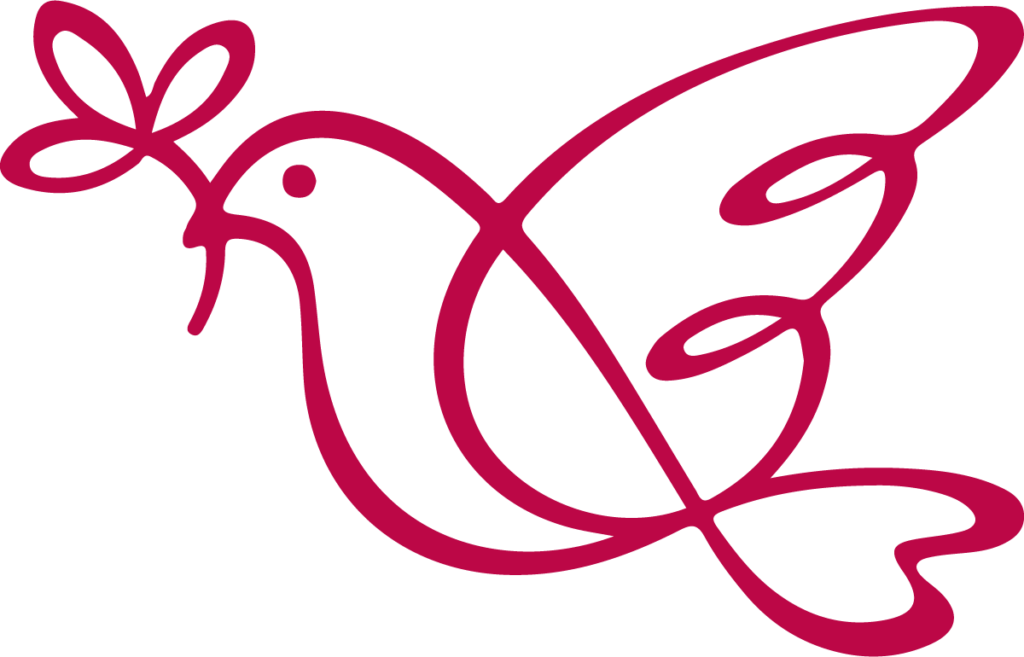Quality Investing generated an annual return of +34.3% to the Sifter Fund in 2021
Sifter is an actively managed stock fund that invests in top-quality companies from across the globe. The fund focuses on the best revenue models that we want to own in the long term.
The contents of this page do not constitute investment advice or purchase recommendations for stocks. This page contains information on Sifter’s past year and our opinions on the companies we have invested in or whose shares we have sold. The past performance of the fund is no guarantee of future results.

The Sifter Fund invests in top-quality companies from across the globe. We sift through 65,000 publicly traded companies to discover the ones with exemplary revenue models.
The strongest growers in the Sifter Fund in 2021
Below, you will find a concise and easy-to-understand list of the top growers in the Sifter Fund (1 January – 31 December 2021, return after expenses, EUR). Even though we are happy to see such a strong increase in the price of these stocks, our focus is still on the strong business models and earnings-generating abilities of these companies.
Old Dominion Freight Line
Old Dominion Freight Line +98,1 %
Old Dominion is a trucking company that is a pure-play Less-Than-Truckload carrier. It essentially means that instead of moving a customer’s goods from location A to B, it uses a hub and spoke model of terminals and moves multiple customers’ goods in its trucks.
The short answer is because there has been a strong shortage of quality less-than-truckload capacity in the US, and Old Dominion has been perfectly positioned for this surge in 2021.
Old Dominion has three interconnected advantages that make it by far the most profitable player.
- Its unparalleled service quality allows it to charge a small premium.
- Thanks to its superior profitability, it has been able to heavily invest and expand its business through economic cycles.
- Its dense network of customers and continuous internal efficiency improvements has further boosted asset utilization and margins.
The long-term underlying growth factors, like the revitalization of the US industrial economy, and the proliferation of eCommerce distribution centers are fully intact.
Alphabet (Google)
Alphabet (Google) +77,8 %
Alphabet is better known as Google. The company is Sifter’s only investment in the so-called FAANG companies. Google’s core business is online advertising, which generates about 80% of the company’s revenue streams.
The short answer is that all the business figures are growing. Based on the Q3 results total revenue increased 41 percent year over year; profits increased nearly 69 percent.
Alphabet appears to be a fairly strong investment overall, as it combines good growth, excellent fundamentals, a strong balance sheet, and industry tailwinds, while also having a strong market position. The company generates an amazing $ 150 billion a year from Google ads.
Despite its size, it has been able to be innovative and generates significant new sources of revenue in addition to its core segments in the previous years. Familiar to many, YouTube is part of Google’s advertising business, but it is still the smallest of Google’s top three sources of advertising revenue. However, YouTube is growing faster than the company’s other major sources of advertising revenue.
For example, Waymo began accepting riders in San Francisco and Google is planning to introduce a dedicated trucking hub to the Dallas-Forth Worth area in the next year. Google’s drone delivery service, Wing, is partnering with Walgreens for air deliveries in select locations.
Novo Nordisk
Novo Nordisk +75.7%
Novo Nordisk is a Danish pharmaceutical company with a leading market position in diabetes care. The company manufactures and sells different kinds of insulin, both rapid and basal insulins, but also other drugs for the treatment and management of diabetes.
The share price has increased by 30 % per annum over the last three years and the biggest movement was last year when it increased by 72%.
One reason for this has been the success of the Semaglutide drug. This is not insulin per se, but it is a drug that is very beneficial for managing type-2 diabetes. The sales of this drug have been very good and for example, revenues grew by 30% last year alone and now makes up 45% of the revenue for the entire company.
In addition, it was found that one big side-effect of this new drug was that it causes a significant reduction in body weight among its users. Based on this the company undertook a large clinical study and the drug was approved by the FDA for use in obesity treatment last year.
The success of this drug for the treatment of obesity surprised both the company’s management and the stock market alike. This is the first obesity drug that actually works well with only limited side effects and this has caused a lot of optimism in the share price.
The outlook for this company is now better than ever. As we all know diabetes and obesity is a large and growing problem in the world. The outlook for Novo Nordisk’s traditional insulin products remains good, but the big upside comes from this new Semaglutide drug and its applications both in diabetes care and for treating obesity.
Fund performance
Sifter Fund Global (Class I) cumulative return after all expenses.
YTD
3 Years
5 Years
Since inception (2003-)
Long-Term Quality Investing
- What are the characteristics of a quality company?
- 5 real-world case studies of quality characteristics in use
- How has quality stocks fared over time?
- Three benefits of long-term quality investing
“For most asset managers, investing means betting for and against companies and focusing on current trends. Sifter’s calm approach is what sets it apart.”
Mika Mäkeläinen, serial entrepreneur
We made two new investments in 2021
We typically make only 2–5 new investments every year. A company that is to be included in the Sifter Fund’s portfolio must be better than another pre-existing investment. These new investments are characterized by such factors as:
- A strong track record of making money
- High barriers to entry
- Clear competitive advantages and a time-tested revenue model
- A healthy balance sheet, preferably with zero debts
- A suitably affordable price in relation to its expected money-making ability
Why did we make only two new investments?
Trading generates unnecessary costs, which then decreases investor returns. That is why we are long-term shareholders and why we are constantly invested in the development of our chosen group of exceptional companies. We are not speculators; we are owners.

Sifter invested in Sony (JPN)
The Sony of today is one of Japan’s Big Tech companies, and the size is roughly half the annual revenue of Microsoft at $85 billion USD. However, for many investors, Sony is a conglomerate that is difficult to understand because the group consists of six different business units.
Sony Group is Sifter’s latest investment.
We particularly like Sony’s positioning in the Console gaming industry, Music industry, and Image sensor industry which are growing quickly. These three business units account for 65% of Sony’s profits today – and we think that their importance for Sony will continue to grow.
We liked the strong competitive positioning in these growing and oligopolistic markets, and after applying conservative estimates on Sony’s future prospects, we realized we would still achieve a good yield on the investment. All Sony’s business units are currently performing at least as well as expected, and below are a few highlights from 2021:
- The PlayStation 5 is continuing to sell very well
- Music streaming is booming
- Sony Pictures Networks India has also announced a merger to strengthen its position in the growing TV market in India
- Sony’s Semiconductor business announced a joint venture plan with world the leading logic chip manufacturer – TSMC


Sifter invested in Nitori (JPN)
Nitori is a home furnishing chain that earns most of its revenue from Japan. We originally invested in Nitori because the company has an excellent track record of profitable growth.
Nitori has increased its revenue and profits every year for more than three decades. Nitori has also reported industry-leading operating margins and ROIC in Japan. The company holds a ca. 20% share of the Japanese home fashion market, and the share has increased at a stable pace.
Nitori has at least two sources of competitive advantages:
- Vertical integration: Nitori has taken the integration particularly far, as the company operates its own factories in Vietnam and Indonesia. This level of integration is not possible for all market players.
- Store network: Nitori operates over 600 stores in Japan, while Ikea only operates 13. We believe that Nitori’s store network is an advantage, particularly in furniture retail, as customers likely prefer to see and feel the products in store before ordering.
In 2021, the outlook of the furniture industry was shadowed by high raw material prices and persistent logistical issues. It is unclear how soon these headwinds will subside. However, Nitori’s vertical integration should allow the company to tackle the industry’s headwinds more efficiently than its smaller rivals.

We sold our shares in three companies in 2021
The companies in our portfolio can never rest easy when it comes to being replaced by other, more interesting investments. If it seems that a company’s revenue model will soon begin to crack or if we find a better option, we will replace the company with a newer, more attractive investment prospect. This way, we can ensure that our portfolio contains only the best businesses and revenue models in the world.
We sold our shares in the following companies:
- iRobot
- Oracle
- Ain Holdings
Why did we sell our investments?
We do not seek short-term investment opportunities, as we want to invest in top-quality companies in the long term. Our analysts actively monitor the business activities, status, and future prospects of the companies in our portfolio. We will only sell our shares when we feel that a company’s revenue model has weakened when we discover a better option or if the share price significantly deviates from fundamental values.

We sold our shares in iRobot
iRobot is an American robotic vacuum cleaner manufacturer mostly known for its Roomba brand of robots. We invested in this company in April of 2020 and sold the investment after less than a year of ownership.
The iRobot investment met several of Sifter’s quality and price criteria. The company has a global market share of over 50 percent, which is due to its strong brand and large patent portfolio. Total market for robotic vacuum cleaners is growing very fast at this moment and the demand is currently growing at double digits per year. The stock price was also at the time very attractively priced compared to other comparable investments.
In January of 2021, there were a few interesting movements in stocks that had been heavily shorted. The most highlighted stock in the media was Gamestop which saw a tremendous, short squeeze take place. Another less well-known stock with a similar phenomenon was iRobot. This stock also saw a similar massive increase in share price over a few days without any clear fundamental reasons.
Therefore, we decided to sell all our shares in iRobot at a 240% profit and we put the cash to better use in our other Sifter companies.
- We invested in the company in April 2020
- This investment provided Sifter Fund investors with +240% in profit


We sold our shares in Oracle
Oracle is a good example of our desire to stay invested in companies that have strong earnings models. We owned the company’s shares for more than 9 years.
Oracle is a software company that generates about ¾ of its revenue from recurring services that it offers to companies and governments alike. These services are mainly linked to critical functions such as databases and enterprise resource planning systems.
The customers are hesitant to cut corners when it comes to these systems. Meanwhile, switching from one software provider to the other is typically a lengthy and risky process. All these characteristics reflect on Oracle’s results: earnings are stable, and margins are high.
Unfortunately, we had to eventually divest Oracle. While the company had a strong earnings model, its competitive position was eroding and leverage was rising. Oracle’s growth lagged competitors for years. This was particularly true in Oracle’s database business, where Oracle’s competitors were more successful in leveraging the shift towards cloud computing.
In the last two years, Oracle’s leverage increased rapidly, driven by aggressive share repurchases. At the time of sale, Oracle was one of the most highly leveraged companies in the Sifter portfolio.
- We invested in the company in 2012
- This investment provided Sifter Fund investors with +248% in profit + dividends


We sold our shares in Ain Holdings
Ain Holdings is the largest dispensing pharmacy chain operating in Japan. The company was in our portfolio for almost five years, but its business never took off and the company did not live up to our expectations.
We initially invested in Ain Holdings in 2016 because the market was experiencing a consolidation wave, and we saw Ain Holdings as being well-positioned to continue to grow, mainly through acquiring independent shops and small chains.
We started scrutinizing the company when management decided to shift their strategy to instead focus on opening up pharmacies on hospital property. This was contrary to our initial investment hypothesis, and the results were not up to our expectations.
The corona crisis, however, presented us with a clear opportunity. As a pharmacy chain, the company was deemed to be a defensive stock and did not suffer as much as the wider market. We thus saw and took the opportunity to start redeploying the capital for better use cases.
- We invested in the company in April 2016
- This investment provided Sifter Fund investors with -5.9% in profit + dividends

We believe in strong revenue models. We are constantly searching for top-quality companies with exceptionally strong revenue models. The best companies provide their owners with peace of mind.
Ideas for Quality Investors
- Detailed information how we invest in quality stocks
- Sifter analysis of quality companies
- Sifter Fund Monthly and Quarterly Reports
Fund classes
The Board of the Fund has decided that a subscription fee is not charged for new investments of the Fund, contrary to what is stated in KIID.
We want to own high-quality revenue models from across the globe. We believe that investing in 30 companies from different countries and sectors provides us with enough diversification.
Long-Term Quality Investing
- What are the characteristics of a quality company?
- 5 real-world case studies of quality characteristics in use
- How has quality stocks fared over time?
- Three benefits of long-term quality investing









